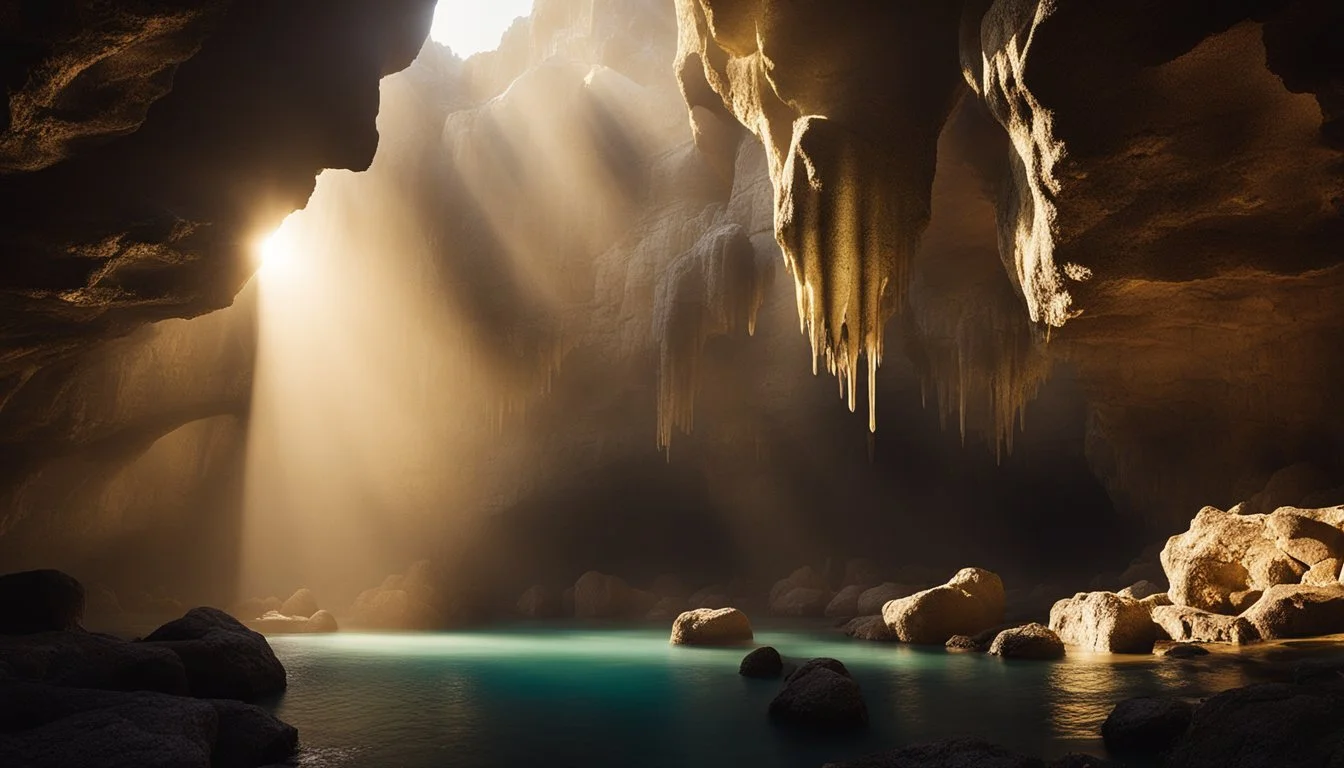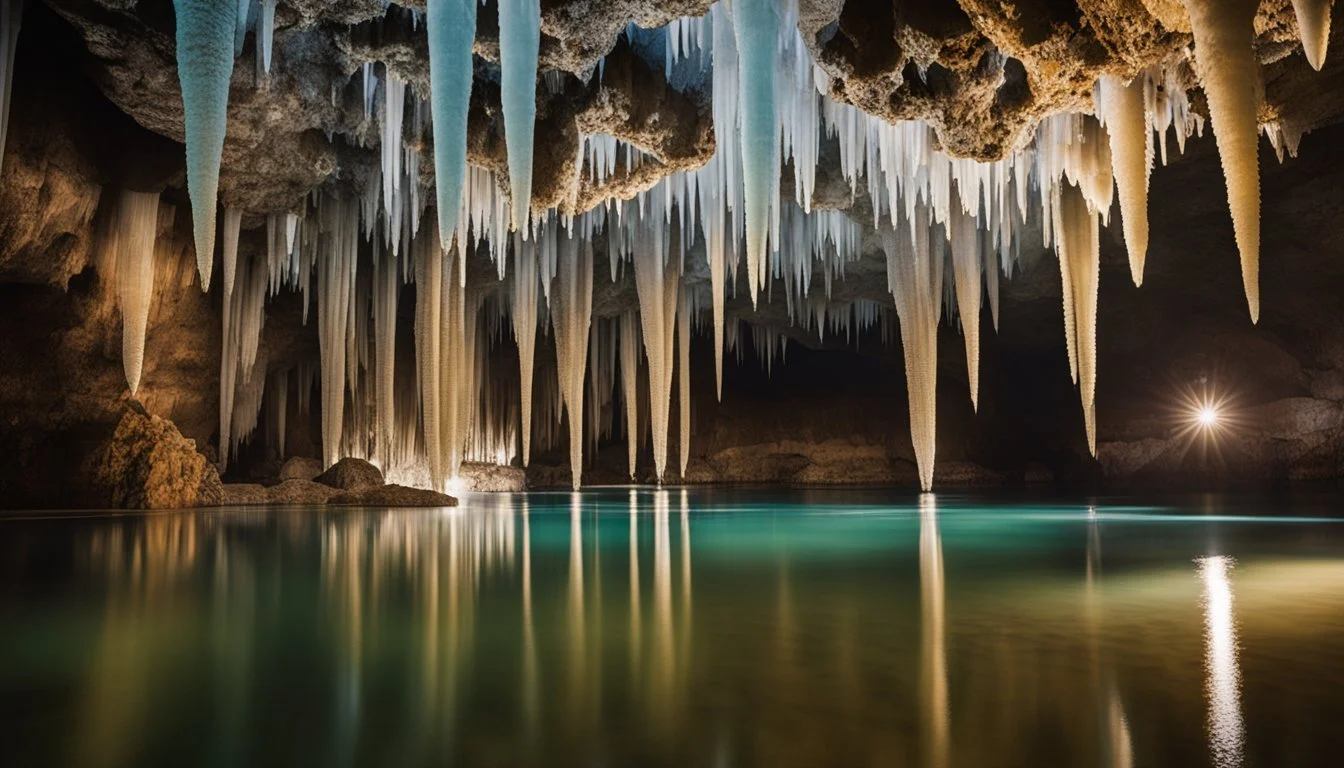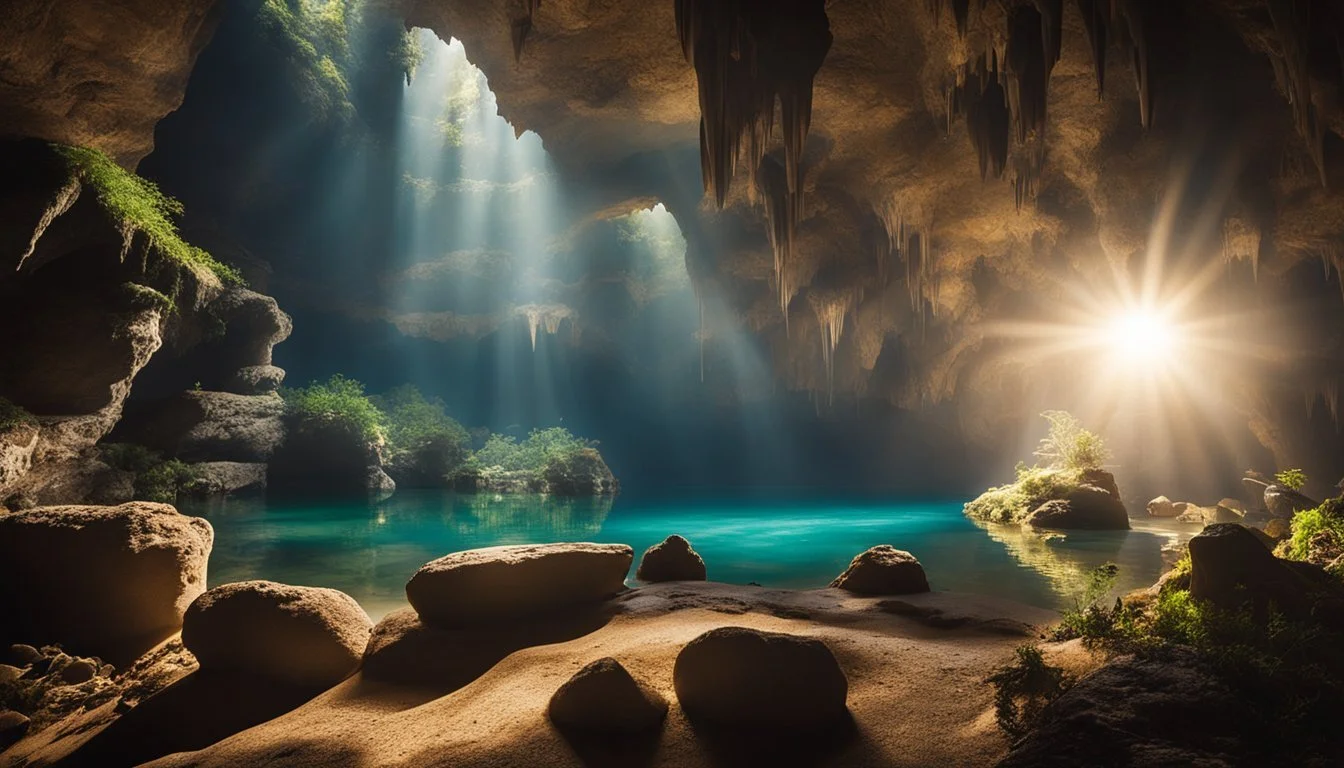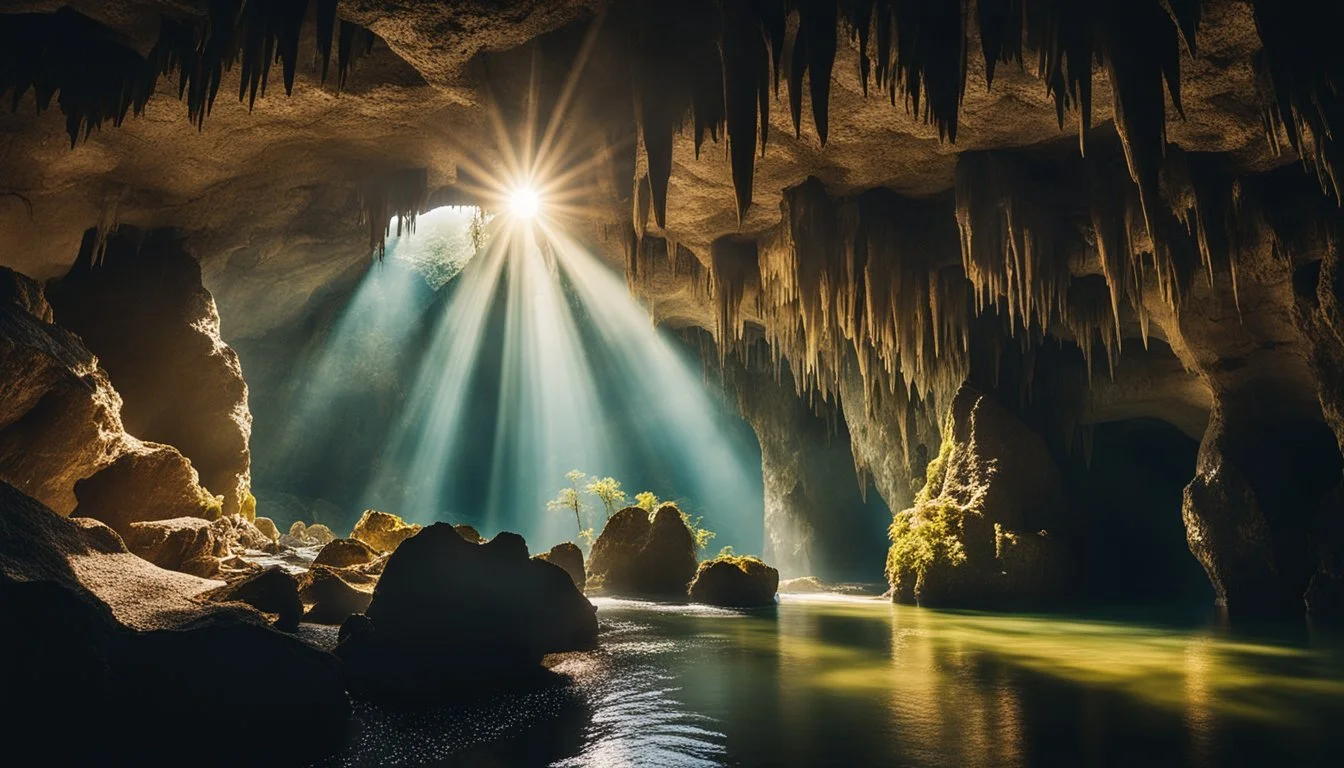Coastal Caverns: Discover Hidden Treasures Near Austin
Central Texas offers a fascinating blend of natural landscapes, from its lush green hills to the limestone cliffs. Among these natural wonders, the underground caves and caverns near Austin stand out as an awe-inspiring attraction. Visitors can embark on self-guided expeditions at the Greenbelt or join guided tours at renowned spots like Longhorn Caverns and Inner Space Caverns.
Austin and its surrounding Hill Country boast a rich array of caves that provide unique experiences for both novice and seasoned explorers. Whether seeking the thrill of discovering hidden cavern passages or admiring the stunning rock formations, these underground locations promise an unforgettable adventure.
Discovering these subterranean marvels allows individuals to connect with nature in a profoundly unique way. The caverns near Austin offer not just a visual feast but an immersive experience into the region's geological history.
The Intriguing World of Texas Caverns
Texas boasts a fascinating array of caverns, showcasing its rich geological history. Formed primarily from limestone bedrock, these natural wonders offer a glimpse into the past, revealing ancient fossils and spectacular formations.
Near Austin, Georgetown's Inner Space Cavern is a prime example. Discovered in 1963, it features stunning stalactites and stalagmites formed over thousands of years.
Kickapoo Cavern is another must-visit. Although it is undeveloped, the raw beauty of its limestone formations is unparalleled. Visitors can explore the caves through guided tours.
For those seeking a more accessible experience, Cascade Caverns near San Antonio offers a guided tour through its illuminated passageways. The smooth gravel paths make it suitable for all ages.
Natural Bridge Caverns, also a short drive from Austin, provides a blend of adventure and education. It's renowned for its immense underground chambers and well-preserved formations. Tourists are often captivated by the sheer scale of the cavern.
Devil’s Sinkhole State Natural Area is another geological marvel. It features a massive limestone sinkhole with an impressive descent, offering a unique spelunking adventure.
Colorado Bend State Park is home to several cave systems, adding to Texas’s impressive cavern repertoire. It invites explorers to traverse its intricate underground pathways.
Texas's caverns not only reflect the geological diversity of the region but also offer countless opportunities for exploration and discovery. Whether it's the thrill of spelunking or the awe of geological beauty, these natural wonders are integral to Texas's landscape.
Austin's Proximity to Subterranean Wonders
The vicinity of Austin, Texas, is renowned for its subterranean treasures, offering adventure seekers easy access to some of the most intriguing cave systems in the region. From guided tours at Inner Space Cavern to exploring the history-rich Longhorn Caverns, there is something for every cave enthusiast.
Convenient Cave Tours and Natural Sites
Austin's proximity to several notable cave systems makes it a prime location for enthusiasts looking for convenient cave tours and natural sites. Inner Space Cavern, located just off I-35 in Georgetown, offers guided tours showcasing awe-inspiring formations and ancient geological wonders.
Longhorn Cavern State Park, situated about 90 minutes west of Austin, boasts an extensive cave system known for its fascinating history and subterranean lakes.
Day trips to Natural Bridge Caverns provide spelunkers with opportunities to explore hidden chambers and underground rivers. Colorado Bend State Park is another fantastic spot, featuring karst formations and wild cave tours. Wonder World Cave and Adventure Park in San Marcos offers a unique chance to walk through earthquake-formed caves.
Georgetown: A Hub for Cavern Enthusiasts
Georgetown, a short drive north of Austin, is a key hub for those keen on exploring caves. The centerpiece here is Inner Space Cavern, discovered during the construction of I-35. It offers well-lit pathways and guided tours that delve deep into the earth's secrets.
In addition to Inner Space Cavern, Georgetown's strategic location allows easy access to other underground marvels like Cave Without A Name and Cascade Caverns. The town serves as an excellent starting point for day trips to various famous caves in the Texas Hill Country, blending convenience with adventure.
Types of Cave Explorations
Cave explorations near Austin offer unique experiences that cater to both families seeking easy adventures and thrill-seekers desiring more demanding challenges.
Family-Friendly Guided Excursions
These tours provide safe, educational experiences suitable for all ages. Guided tours often include the Crystal Palace Tour and the Discovery Tour.
Participants can walk through well-lit paths, learning about the geological formations from knowledgeable guides.
Highlights include viewing stunning stalagmites and stalactites, and photographing the natural beauty within accessible caves like Longhorn Caverns.
Additionally, these tours might offer educational activities about local flora and fauna, offering a memorable experience that combines leisure with learning.
Adrenaline-Inducing Adventure Tours
For those craving more excitement, wild cave tours and hidden passages tours present rigorous, exhilarating challenges.
Participants might find themselves crawling, climbing, and squeezing through narrow tunnels, exploring less accessible parts of the caverns.
One notable example includes Bullet Cave on Barton Creek Greenbelt, inviting explorers to navigate dark, tight spaces.
These tours require a moderate to high fitness level and often feature the thrill of discovering less-traveled cave sections, making each expedition uniquely personal and adventurous.
Safety equipment like helmets and knee pads is typically provided, ensuring that explorers can push their limits while remaining protected.
Understanding Cave Formations
Cave formations, also known as speleothems, are created through complex geological processes involving minerals like calcite. These fascinating structures inside coastal caverns offer a glimpse into the Earth's history.
Stunning Stalactites and Stalagmites
Stalactites hang from the ceilings of caves, while stalagmites rise from the ground. Both are formed primarily from calcite deposits, which develop as mineral-rich water drips through the ceiling of a cave. Over time, these drips leave behind tiny amounts of calcite that build up to create these stunning features.
The shape and size of stalactites and stalagmites can vary widely. Soda straws are thin and tubular stalactites, often serving as precursors to larger formations. When a stalactite and stalagmite meet, they form a column, uniting ceiling to ground.
Other Fascinating Geological Features
In addition to stalactites and stalagmites, coastal caverns also showcase a variety of other formations. Flowstones are sheet-like deposits of calcite formed by water flowing over walls or floors. These formations often have a smooth, wavy appearance.
Helictites are another intriguing feature, growing in twisted and gravity-defying shapes due to capillary forces. Cave bacon is so named for its distinctive layers and ribbon-like appearance, resembling strips of bacon.
Limestone caverns near the Balcones Fault Line often contain fossils, embedded within rock formations. The array of geological features in these caves makes them unique and visually captivating.
Cave Conservation and History
Cave conservation initiatives in the Austin area emphasize protecting delicate ecosystems and preserving rich cultural histories. These efforts help maintain the diversity of life within the caves and safeguard historical narratives tied to the region.
Living Caves and Biodiversity
Caves around Austin, such as those maintained by the Texas Highway Department, house unique ecosystems. These "living caves" are home to species like the Mexican free-tailed bats, which form large colonies and play key roles in pest control and pollination.
Efforts to conserve these habitats focus on minimizing human impact, crucial for species that have adapted to the darkness and stable environments. Practices such as restricted access help reduce disturbances to bat colonies and other cave dwellers.
Additionally, conservation programs often involve monitoring water quality within cave systems to ensure the delicate balance of these ecosystems is not disrupted. This also extends to geological formations, like stalactites and stalagmites, which take centuries to form and can be easily damaged.
Historical Significance and Cultural Lore
Underground caverns near Austin hold significant historical and cultural value. Caves such as those explored during the Civil War provided refuge and strategic advantages. The Comanche Indians, known for their rich traditions, often used these caves, with places like the Indian Council Room serving as key meeting points.
Figures like Sam Bass, a notorious outlaw, add a layer of intrigue to the region's cave history. Stories of Bass using caves as hideouts highlight their role in local folklore. The Ice Age also left its mark, with prehistoric animals leaving fossilized remains, offering insights into ancient biodiversity.
Projects spearheaded by the Civilian Conservation Corps during the 20th century further solidified the preservation of these historical sites. By maintaining and documenting the caves, these efforts ensured that future generations can access these natural and historical treasures.
Recreational Activities Beyond Caving
Exploring coastal caverns near Austin opens up a variety of other recreational activities, from immersing in the Texas Hill Country's landscapes to engaging in thrilling rock climbing adventures.
Aboveground Wonders in the Texas Hill Country
The Texas Hill Country offers an array of outdoor experiences. Hikers can explore Barton Creek Greenbelt, which boasts numerous trails weaving through beautiful limestone formations and lush greenery.
For a serene outing, the San Marcos River provides opportunities for kayaking and tubing, allowing visitors to enjoy the clear waters and scenic banks.
Enchanted Rock, a massive pink granite dome, is a popular spot not only for its geological wonders but also for its panoramic views of the rolling hills and surrounding landscapes.
Waterfalls and swimming holes in the area, such as Hamilton Pool Preserve, offer refreshing retreats after a day's adventure. Camping facilities are available, providing a perfect overnight escape into nature.
Rock Climbing and Outdoor Sports
Texas Hill Country is a haven for rock climbers, with Enchanted Rock being a prime destination. Its granite faces offer routes for both novice and seasoned climbers. Barton Creek Greenbelt also features climbing spots that cater to a range of skill levels.
Outdoor sports enthusiasts will find plenty of opportunities. Beyond climbing, the region supports activities like mountain biking and trail running.
San Marcos hosts Blanco Shoal for excellent white-water rapids, ideal for kayak and paddleboard adventures. The area's diverse terrains ensure that every adventurer finds something exciting to engage in.
Swimming holes and secluded spots allow for a blend of thrill and relaxation, rounding out the experience.
Practical Information for Cavern Visits
Visitors to the coastal caverns near Austin should consider preparing adequately for their trip and be mindful of the amenities and accessibility offered by each site.
Planning Your Cave Adventure
When planning a cave adventure, it's critical to research ahead and decide whether to join a guided tour or explore on your own. Guided tours often provide expert insights into the cave's history and geology, enhancing the experience. Popular options include lantern tours and adventure tours, where visitors can choose between relaxed walks or more strenuous explorations.
A map and correct timing are essential. Many caves, such as the Longhorn Caverns, have specific operating hours and may be closed on certain holidays. It’s wise to check schedules and book tickets in advance to avoid disappointments.
Amenities and Accessibility
Most caverns around Austin are equipped with necessary amenities to ensure a comfortable visit. These include restrooms, gift shops, and sometimes even unique attractions such as gem and fossil mining activities or dance halls for special events. It's important to verify what each location offers before visiting.
Accessibility varies by location. Some caves, like the Cascade Caverns, are designed to be accessible to those with mobility issues, while others may require strenuous physical activity. Important features to look for include paved pathways, handrails, and availability of guided assistance. Always check in advance to ensure the cavern visit meets personal accessibility needs.






